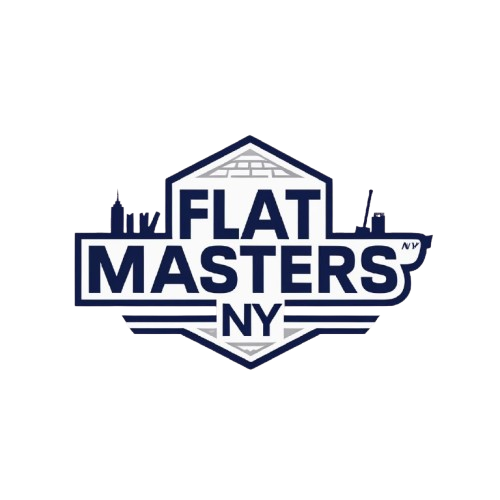Professional Adding Peak to Flat Roof Solutions You Can Trust
Adding a peak to a flat roof typically costs between $8,000-$25,000 in Queens, depending on the size of your building and complexity of the modification. This roof modification transforms your flat roof into a pitched system, improving drainage and giving your property a completely different architectural appearance.
After twenty-three years working on flat roofs across Queens - from Astoria co-ops to Long Island City warehouses - I've seen just about every variation of this modification. Some homeowners want the aesthetic change, others are tired of dealing with ponding water issues that plague flat roofs during our heavy spring rains.
Understanding Roof Modification Options
When we talk about how to add a peak to a flat roof, we're really discussing structural engineering combined with roofing expertise. It's not simply throwing some lumber on top of your existing roof and calling it a day. The modification requires careful planning, proper permits from the Queens Department of Buildings, and honestly, a contractor who knows what they're doing.
There are essentially three approaches we use at Flat Masters NY:
- Complete structural reconstruction with new framing
- Adding a peaked framework over existing flat structure
- Partial modification for specific problem areas
The first option gives you the most dramatic change but costs the most - usually running $15,000-$25,000 for a typical Queens residential building. The framework addition approach costs less, around $8,000-$15,000, but you're working within existing limitations.
Structural Requirements and Building Codes
Here's where things get complicated, and frankly, where a lot of contractors cut corners. Adding peak to flat roof modifications in New York City require structural calculations. The existing roof structure needs to support additional weight from new framing, roofing materials, and increased snow loads that come with peaked surfaces.
We always start with a structural engineer's assessment. Yeah, it adds $800-$1,200 to the project cost upfront, but I've seen too many DIY disasters and budget contractor failures over the years. Last month we had to completely redo a job in Elmhurst where another contractor tried to skip the engineering phase.
| Project Component | Typical Cost Range | Timeline | Notes |
|---|---|---|---|
| Structural Engineering | $800-$1,200 | 1-2 weeks | Required for permits |
| DOB Permits | $1,500-$3,000 | 2-6 weeks | Alt-2 permit typically required |
| Framework Installation | $4,000-$8,000 | 3-5 days | Weather dependent |
| Roofing Materials & Install | $3,500-$8,500 | 2-4 days | Varies by material choice |
| Waterproofing & Flashing | $1,200-$2,500 | 1-2 days | Critical for long-term success |
The permit process alone can take two months in Queens. We handle all that paperwork for our clients because frankly, dealing with the DOB is basically a full-time job if you're doing it right.
Benefits of Converting Flat to Pitched Roof
Why would you want to add a peak to your flat roof? The obvious answer is drainage - water runs off instead of pooling. But there are other advantages that make this roof modification worth considering.
Energy efficiency improves significantly with proper insulation in the new peaked structure. We typically see 15-20% reduction in cooling costs during Queens' brutal summers when we install adequate ventilation systems. The aesthetic change can also increase property values, especially in neighborhoods like Forest Hills or Kew Gardens where pitched roofs are more common.
Snow load distribution becomes much more manageable too.
During the big storm last February, we got calls from dozens of flat roof owners dealing with ice dams and water backup. The peaked roof modifications we'd completed the previous year? Zero problems.
Material Options and Longevity
When it comes to materials for your peaked roof modification, we usually recommend architectural shingles for residential properties. They last 25-30 years, handle Queens weather well, and come in colors that match neighborhood aesthetics. Metal roofing works great too - costs more upfront but lasts 40+ years with minimal maintenance.
The framework typically uses engineered lumber or steel depending on span requirements and existing structure limitations. Steel costs about 30% more but gives us more flexibility with longer spans, which matters in commercial buildings or larger residential properties.
Common Challenges and Solutions
Here's what most contractors won't tell you about adding peak to flat roof projects: the biggest challenge isn't the construction - it's dealing with existing utilities and HVAC systems. Every flat roof in Queens has condensers, exhaust fans, or other equipment that needs to be relocated or worked around.
We budget an extra day just for utility coordination on most projects. Sometimes the HVAC guy needs to move equipment, sometimes ConEd needs to relocate electrical connections. It's all manageable but requires planning.
Another issue we see frequently - especially in older Queens buildings - is discovering structural problems once we start the modification. Foundation settling, beam sagging, or inadequate original construction that wasn't apparent during initial inspection.
Timeline and Project Management
Most roof modification projects take 2-3 weeks from start to finish, assuming normal weather conditions. We can't work in rain or high winds, and Queens gets its share of both. Spring and fall are ideal seasons - summer heat makes the work brutal, and winter brings obvious complications.
The sequence matters too. Framework goes up first, then roofing installation, finally all the detail work around penetrations and transitions. We always plan for weather delays because Murphy's Law applies especially to roofing projects.
What questions should you be asking contractors about this type of work? First - are they licensed and insured for structural modifications? Second - have they done similar projects in Queens specifically? And third - can they show you examples of their work that's at least five years old?
At Flat Masters NY, we've been handling these complex roof modifications since 2001. Every project starts with a thorough structural assessment, includes proper permitting, and comes with our standard 10-year warranty on workmanship. Because when you're investing this much in changing your roof, you want to know it's done right the first time.
Cost Factors and Budget Planning
Beyond the base costs I mentioned earlier, several factors can push your project budget higher. Building height affects material costs and labor time - three-story buildings require more safety equipment and take longer. Existing roof condition matters too - if we discover structural issues or need extensive repairs before starting the modification, costs increase accordingly.
Seasonal pricing variations are real in Queens. Spring demand drives prices up 10-15% compared to fall scheduling. Winter work is possible but costs more due to heating requirements and weather protection needs.
Most homeowners finance these projects through home equity loans or contractor financing programs. The monthly payment on a $15,000 roof modification typically runs $200-300 depending on terms, which often makes sense compared to ongoing flat roof maintenance costs.

